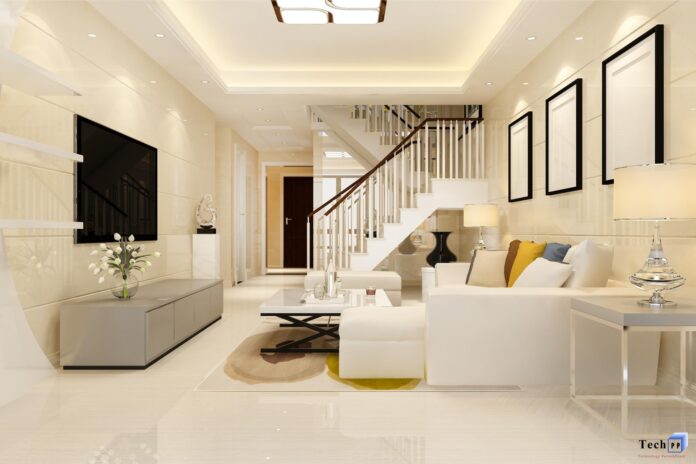Elegant Home Design! Creating a sophisticated and elegant home is both an art and a science. While personal taste certainly plays a role, it’s the insights and expertise of professionals that truly elevate a space. Achieving elegance doesn’t simply mean filling rooms with expensive furniture. Instead, it revolves around thoughtful planning, creative problem-solving, and the application of design principles that transform a house into a harmonious living space. This article explores how professional designers approach home design, balancing aesthetics and function to craft timeless interiors.
Understanding Elegance in Home Design
Elegance, in home design, transcends trends and fleeting styles. It’s about creating spaces that feel effortless and balanced. But what exactly defines an elegant interior?
Key Traits of an Elegant Home
Elegant spaces share a few distinct characteristics:
- Simplicity: A clutter-free environment with clean lines and minimal distractions allows beauty to shine.
- Balance: Proportion and symmetry are used to create visual equilibrium.
- Attention to Detail: Tiny elements, such as hardware finishes or the stitching on upholstery, contribute to the overall impact.
- Refined Color Palettes: Neutral tones, soft hues, and carefully chosen accents provide understated sophistication.
Professionals bring these principles to life, ensuring every detail contributes to the cohesive vision of a home.
The Role of Professional Expertise
While DIY approaches to home design are possible, there’s a marked difference in results when professionals are involved. Their training, experience, and understanding of design nuances help streamline the process and achieve outcomes that feel polished and cohesive.
Holistic Planning
Professional designers assess a space holistically before making decisions. They consider the flow between rooms, how light interacts with the space, and the function of each area. This planning ensures that every choice fits into the bigger picture.
Access to Resources
Professionals have access to exclusive furniture collections, materials, and bespoke solutions that elevate a design. Additionally, they often collaborate with artisans and craftspeople to create one-of-a-kind pieces tailored to specific spaces.
Problem-Solving and Adaptability
Challenges, such as awkward layouts or limited natural light, are common in many homes. Designers bring a problem-solving mindset, developing creative solutions that optimize and transform such spaces.
Techniques for Timeless Elegance
Achieving elegance requires more than just an understanding of design principles. Professionals rely on techniques and strategies that adapt to the unique needs of a home.
Layers of Lighting
Lighting plays a critical role in setting the tone of a room. Professionals integrate multiple layers of lighting, such as ambient, task, and accent lighting, to create depth and versatility. For example, dimmable chandeliers or pendant lights paired with accent lighting can make a dining room feel both functional and intimate.
Textural Harmony
Mixing textures seamlessly is another hallmark of professional design. Incorporating materials like soft fabrics, polished wood, matte finishes, and metallic accents creates tactile and visual interest. When handled correctly, this mix avoids overwhelming the space while adding richness and character.
Thoughtful Space Planning
Elegance thrives in spaces designed for functionality. This involves thoughtful placement of furniture and décor to maximize flow and usability. For example, creating conversational seating arrangements or ensuring pathways are unobstructed can make a room both beautiful and practical.
Making Design Personal but Professional
The best designs strike a balance between personal expression and professional polish. Professionals work to incorporate their clients’ tastes while elevating them to fit an elegant narrative.
Customization
Designers often tailor solutions to meet specific needs or preferences. Whether it’s custom cabinetry, bespoke furniture pieces, or curated art, these details anchor the design in personal significance while reinforcing the overall theme.
Cohesive Storytelling
Effective interiors tell a story. By weaving together elements like color, form, and décor, designers craft narratives that evoke emotions and reflect the lifestyles of those who live in the space.
The Transformative Impact of Elegance
Engaging the expertise of an interior designer in Alpine can have a profound effect on the transformation of a home. Many clients witness not only a remarkable visual improvement but also a boost in how they interact with and feel about their living spaces.
Improved Atmosphere
Elegant designs foster tranquility. From selecting calming colors to optimizing natural light, professionals create spaces that encourage relaxation and well-being.
Increased Functionality
Beyond aesthetics, professional designs enhance how a home functions. Every element serves a purpose, whether it’s improving comfort, supporting daily habits, or adding value to the property.
Timeless Appeal
Unlike quick fixes and trends, professional design ensures longevity. Thoughtful choices and timeless elements make a home look relevant and beautiful for years to come.
Conclusion
Elegant home design is more than simple decoration. It’s a combination of creativity, thoughtfulness, and precision that turns everyday spaces into works of art. Professional designers bring unmatched skills and insights to this process. They create cohesive, personalized designs that not only look stunning but also enhance the functionality of a space. For anyone seeking to transform their home into a haven of elegance and sophistication, the magic touch of professional expertise can make all the difference.


